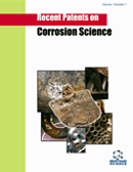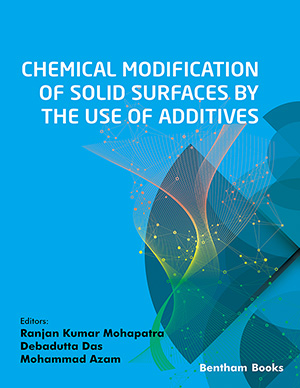Abstract
Nowadays organic compounds corrosion inhibitors are receiving more and more attention due to their wide applications in acidic rinsing and pickling of metals in industry and laboratory, how to build a kinetic model to quantitatively describe corrosion behavior in the absence and presence of organic corrosion inhibitors is of great importance to corrosion research, the recent progresses in corrosion inhibitors researches and patents are reviewed with a focus on metal corrosion and inhibition in acidic solutions. The effect of 4-(2-Pyridylazo) resorcin (PAR) on the corrosion inhibition of steel in a concentration range of hydrochloric acid has been investigated by using weight loss method, in order to study the concentration of acid and experimental temperature on the steel corrosion in the absence and presence of corrosion inhibitor, a general kinetic model has been proposed, to verify its correctness, temperature dependent and acid concentration dependent experiments have been carried out. It is found that for each experimental temperature inhibition efficiency monotonously decreases with an increase in concentration of hydrochloric acid, there is a “critical concentration” in this system, when concentration of hydrochloric acid is lower than this “critical concentration”, effect of experimental temperature on inhibition efficiency is unobvious. In point of the application of PAR as steel inhibitor in hydrochloric acid, it is safe for PAR to be used at a relatively low temperature; the logarithm of corrosion rate is directly proportional to the concentration of hydrochloric acid, i.e., lnv ∞ c; the logarithm of N is reciprocally proportional to the 1/T, i.e., lnN ∞ -1/T; the logarithm of corrosion rate is reciprocally proportional to 1/T, i.e., lnv ∞ -1/T; A “peak” value of apparent activation energy appears with increasing concentration of hydrochloric acid when fixing inhibitor concentration. For the uninhibited specimen, the “peak” value appears at 1.0 M HCl, for the inhibited specimen, however, the “peak” value appears at 1.5 M HCl. The experimental data accords well with the proposed theoretical kinetic model. Furthermore, the recent advances in corrosion inhibitions and inhibitors are reviewed with a focus on the progress of corrosion inhibition for metals in acidic solutions.
Keywords: Corrosion, kinetic model, PAR, hydrochloric acid, steel, 4-(2-Pyridylazo) resorcin, Inhibition Efficiency, Corrosion metal inhibitor, corrosion inhibitions, anionic acid corrosion inhibitor, oxygen corrosion, optional corrosion inhibitor, intensifier, Gravimetric Measurements, Coatings Technology, synergistic inhibition, Biodegradable anionic acid corrosion
 35
35







